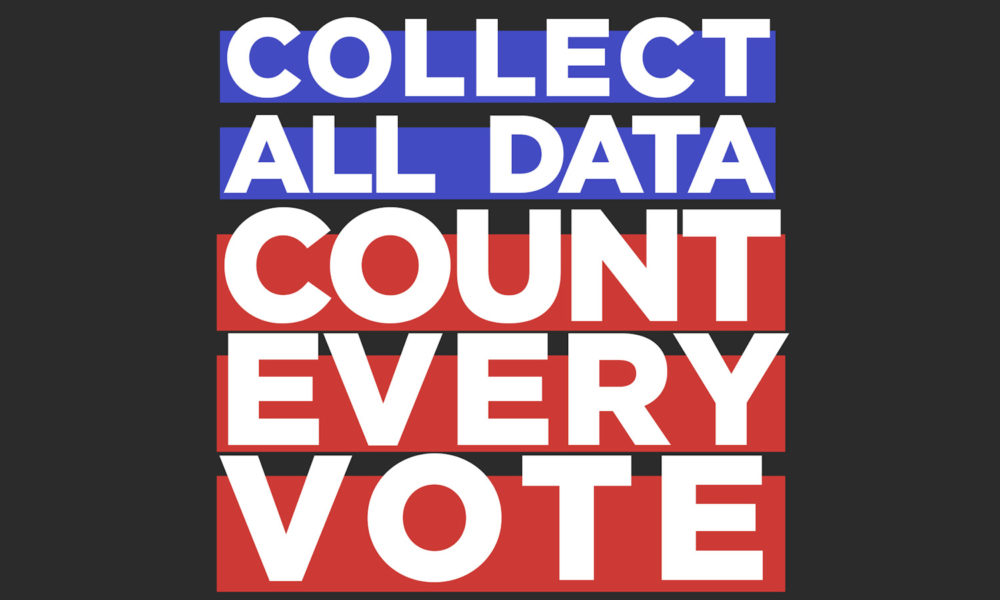While final results are still being tabulated, it is clear that voter turnout in the 2020 election is breaking a century-old record with more than two-thirds of eligible voters likely participating in this year’s democratic ritual.
Overcoming numerous barriers to voting that keep participation from achieving levels enjoyed by other democracies around the world, people across the country organized with their friends, families, and neighbors, took advantage of new opportunities to vote by mail, and shifted the political landscape in a new direction with millions of new participants. Voters showed that even our rickety electoral system is capable of generating majority preferences in a transparent if slow process.
When the COVID-19 pandemic hit the US in the middle of presidential primaries, most states took measures to provide alternatives to voting in person on Election Day. Central to that effort was the expansion of vote-by-mail procedures, which involved suspending or reducing requirements to request an absentee ballot, sending mail ballot applications to registered voters, and in the case of several states, adopting universal-vote-by-mail (sending every eligible voter a ballot), automatic and same-day registration, and one-stop voting centers, innovations that were already developed in states like Colorado, Oregon, Washington and Utah.
The U.S. Senate hampered these efforts, failing to provide emergency election infrastructure funding and administrative requirements when they had the opportunity to do so. Nevertheless, the results paid off. Vote-by-mail requests surged across the country in states that allowed it. Some of the most populous counties experienced the largest expansion of vote-by-mail, as figure 1 below shows. By Election Day 2020, urban centers like Georgia’s Fulton County, Michigan’s Wayne County, Pittsburgh’s Allegheny County, Philadelphia, Milwaukee would see the largest influx of mail ballots in the country, enough in many cases to make up a majority of votes cast.

Unfortunately, the capacity to process these ballots was hamstrung in some states that enacted contradictory rules, were challenged by lawsuits, and/or failed to adequately equip local election officials with the resources they needed to ensure timely and efficient ballot processing. Those who were watching knew all along that Pennsylvania was going to experience problems and delays, given that the fact that they sent mail ballot applications to all voters, but failed to provide time ahead of Election Day to process the ballots. Michigan and Wisconsin enacted similarly nonsensical policies, and it should come as no surprise that these are among the three most gerrymandered legislatures in the country, with a history of hostility toward voting rights and equality. In spite of their legislatures, voters persisted.

In our sample of populous and pivotal counties, turnout increased by an average of 10%, as predicted (Figure 2). More importantly, we saw turnout increase rather uniformly across these counties, including lower-turnout counties, which tend to be more economically distressed compared to counties with consistently high levels of turnout.
While it is nearly certain that large socioeconomic inequalities in voter participation persisted (30% or more of eligible voters were still left out of the conversation), these findings suggest that people across the spectrum, including more people in communities of color, and more people normally isolated from electoral politics, became part of the political process this year. This would have never happened without committed volunteer organizations dedicated to building relationships with frequently forgotten voters. For example, groups like Fair Fight laid the groundwork in Georgia and other states for years, developing a network of relationships that brought thousands of new voters out to express their voice. Similarly, Battle for Democracy Fund worked across the Rustbelt, and Mi Familia Vota engaged residents across the Southwest to build leadership networks among voters who are traditionally left behind in the political process. Our Science Network members partnered with dozens of such organizations to bring together advocates for evidence-based policy with local organizers to achieve record turnout levels where it was needed most.
How did increased participation change the electoral landscape? The available evidence suggests that increasing opportunities to vote bolstered turnout everywhere as shown above, but not for a single party. Despite claims from right-wing organizations about surges in mail ballots being linked to “voter fraud,” there is no evidence of outliers of support for Democratic candidate Joe Biden in these major population centers. Figure 3 shows that among our pivotal counties, the only obvious outlier is Miami-Dade County in Florida, where the Democratic Party seriously under-performed relative to 2016, and where there are potential concerns about the delivery of mail ballots in South Florida counties.

Indeed, with the votes currently tabulated, there has been very little shift in partisan support in the counties that experienced the biggest surges in vote-by-mail. The change in Democratic support from 2016 to 2020 is minimal or even negative in Fulton (72%,73%), Wayne (69%,69%), Allegheny (59%, 60%), Philadelphia (84%, 82%), and Milwaukee (55%, 56%) counties.
The overall increase in Democratic support that put former Vice President Biden and Kamala Harris in the White House occurred across a wide range of counties, Democratic and Republican, and a wide range of states, which is why the results have been so close in so many. We can only hope that when Congress reconvenes in January, they will take up the cause of ensuring that every state has the capacity to ensure that every voter, regardless of where they live or which party they support, has an equal opportunity to cast an equally weighted vote, safely and securely.
While the remaining votes, including military and overseas ballots which have been sent by mail for decades, are tabulated, and final vote canvasses are certified, patience is a democratic virtue. We must finish collecting the data of our democracy by counting every vote, correcting the errors that inevitably emerge with any data processing, and respect the results.

